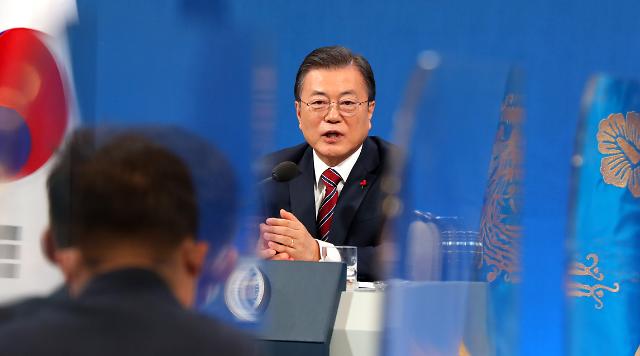President Moon Jae-in sent a positive supply signal to the market at a New Year’s press conference held on the 18th, saying, “We are trying to come up with special measures in real estate supply while keeping the existing stance to suppress speculation.” This is contrary to the policy stance that has been insisting on suppressing demand.
President Moon stressed that “in the metropolitan area, especially downtown Seoul, we will increase the supply of real estate specially beyond what the market expects by increasing the participation and initiative of the public sector, strengthening incentives and greatly shortening the process.”
As the government introduced a plan to supply 130,000 households in downtown Seoul in the August 4th measure, which was the previous supply plan, the plan to provide at least 200,000 households in low-rise residential areas such as station areas and villas, and semi-industrial areas can be included have.
The government revised the enforcement decree on the 19th to ease regulations on complex development in the station area in order to increase the floor area ratio to more than 700% by integrating low-rise housing in the station area with an average floor area ratio of 160%.
In the case of public redevelopment, on the 15th, the government selected eight candidate sites for pilot projects in Seoul. The Korea Land and Housing Corporation (LH) plans to determine these areas as maintenance areas by the end of the year. In addition, as 70 districts participated in the public offering, an analysis is raised that there is much room for further increase in supply by expanding the target area through screening.
In order to finalize the candidate site for public reconstruction, it will continue to communicate with the pre-consulting response complex, and promote the second consulting for recruiting additional complexes.
If the public maintenance project proceeds according to the government’s plan, a total of 90,000 households could be supplied to downtown Seoul alone.
However, the industry does not expect that there will be any policy that will calm the market in the upcoming measures.
This is because the public maintenance projects, high-density development in the station area, and new residential land projects in the city center announced in the 5·6 and 8·4 measures last year have not been on track or have just begun a development plan. The method of adding only countermeasures while existing policies are not ripe can act as a burden on the government.
It has also maintained its stance on the importance of reconstruction and redevelopment and transfer tax, which are considered to have held back supply expansion.
As it takes at least 4 to 5 years for the government-led housing supply plan to become reality, it is pointed out that alternatives such as deregulation of private maintenance projects are needed to alleviate the unrest in the housing market in the short term, but the government is expected to continue the public-led method. .
However, it is difficult to fill the entire supply with maintenance projects excluding the private sector.
As a result of pre-consulting, only small apartments with 500 or less households, such as single-family apartments, are showing interest in public reconstruction, which is initially under the goal of supplying 50,000 households. Even in this case, 2771 households can be supplied only if all of them show willingness to do public reconstruction. It is 5% of the original target amount.
There is an opinion that the strengthening of the transfer tax should be postponed or eased to open the retreat for multi-homed people, but this will also be carried out as planned.
Lee Eun-hyung, a senior researcher at the Korea Institute for Construction Policy, said, “The current regime’s real estate policy is maintaining a two-track method of expanding supply while maintaining regulations. We will come up with special supply measures before the New Year, but most of them are already mentioned measures. It is difficult to expect the effectiveness of the policy as it maintains the regulation of the government.
